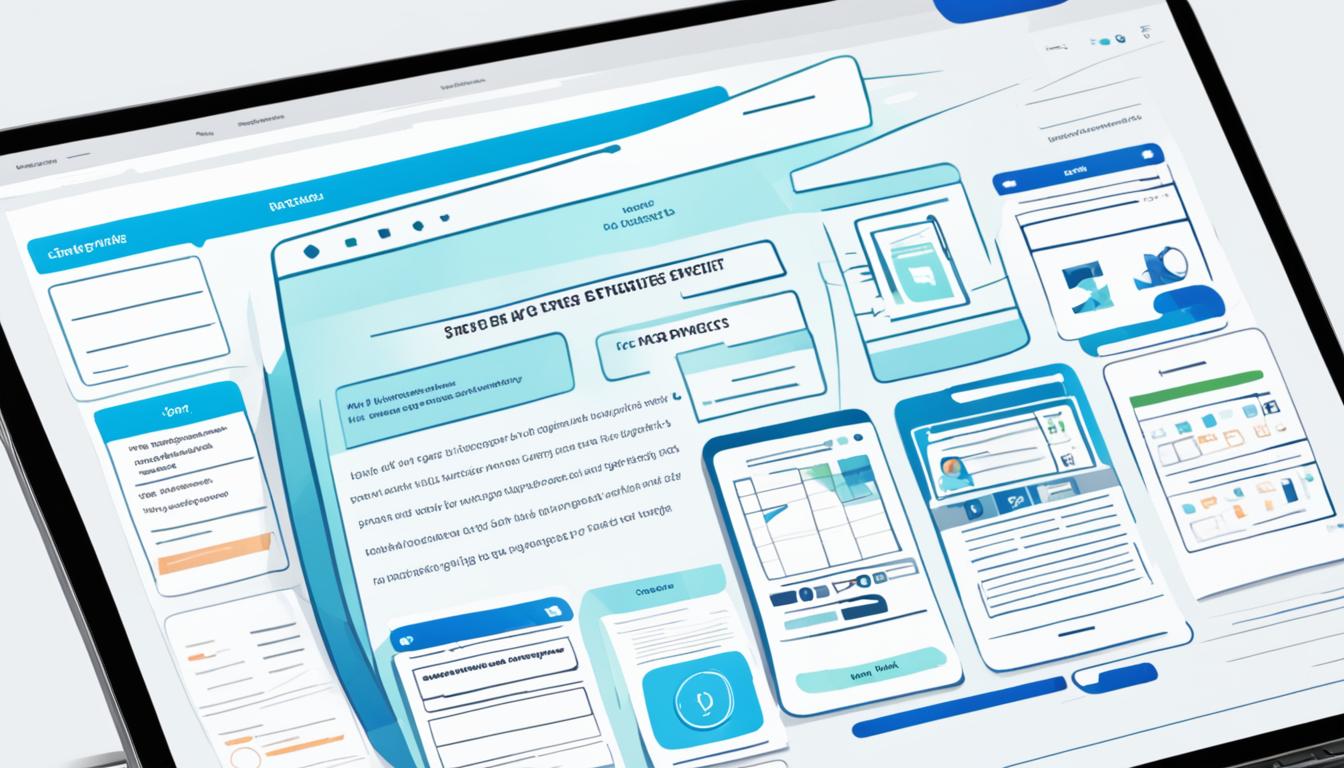Artificial intelligence (AI) is changing our daily lives and the way we learn. It’s vital to bring AI into classrooms. Interactive AI worksheets help make learning exciting. They encourage students to think critically and solve problems.
These worksheets are great for enhancing learning in class and for those studying AI on their own. They cover a wide range of topics. This makes learning AI fun and accessible for both teachers and students.
Students can start with AI basics and move on to complex topics like machine learning. These worksheets offer everything needed to understand AI. Through interactive exercises, learning becomes more engaging and enjoyable.
These worksheets are perfect for use in classrooms or for individual study. They are an excellent resource for educators and learners. By using AI, teachers can prepare students for a future where AI is everywhere.
Start exploring artificial intelligence with these worksheets today. Discover endless opportunities for learning.
What is Artificial Intelligence?
Artificial intelligence (AI) lets computers do things that normally need human brains. This includes learning, making decisions, and solving problems.
Different methods can create AI. Machine learning helps AI improve by learning from data. Rule-based systems follow specific instructions to work.
AI is used in many fields, such as understanding languages, recognizing images or videos, and making robots.
The aim is to make AI systems that perform tasks as well as, or better than, humans. This could push computer intelligence even further.
Machine Learning and Rule-Based Systems
Machine learning is a key part of AI. It trains systems with data to learn patterns. Then, it uses this learning to make predictions or choices. The more data it gets, the better it becomes.
Rule-based systems work differently. They follow specific rules and logic to complete tasks. They don’t learn like machine learning systems, but they’re good for jobs with clear rules.
“Artificial intelligence gives us the power to create systems that can think, learn, and make decisions like humans, opening up new possibilities for automation, problem-solving, and innovation.” – Dr. Jane Smith, AI Researcher at TechGenius
Applications of Artificial Intelligence
AI has changed many industries and keeps influencing technology’s future. In natural language processing, it lets systems understand human language. This lets virtual assistants and chatbots talk to us effectively.
In surveillance, healthcare, and self-driving cars, AI’s image and video recognition is a game-changer. It can spot objects, faces, and even feelings in images or videos. This helps make these systems safer and more efficient.
Robotics benefits a lot from AI too. AI enables robots to do complex jobs, move precisely, and adapt to new situations. They’re making big improvements in industries and medical procedures by working more efficiently and safely.
AI Tools for Educators
Educators can use many AI tools to make teaching better and more fun. This section will look at some key AI tools for teachers.
AI Chatbots
AI chatbots help teachers by answering questions and talking with students. Bing Chat, ChatGPT, and Perplexity are good examples. They use AI to give quick answers and support to both teachers and students.
Generative AI Models
Generative AI models let teachers create unique visuals and videos. Tools like Adobe Express with Firefly, Bing Image Creator, and Pictory AI help make learning more engaging. Teachers can make interesting visuals and videos easily.
Visual and Design tools
Other tools include visual and design aids for teachers. Canva Classroom Magic is great for making beautiful visuals and content. It makes it easy for teachers to grab their students’ attention.
AI tools are very helpful for teachers. They help make lessons more interactive and suit each student’s needs. Using AI chatbots, generative models, and design tools makes teaching exciting.
The Benefits of AI Tools for Educators
“AI tools not only save time but enrich learning. They allow teachers to use new ways to teach. This leads to classes that encourage thinking and solving problems,” says Jane Smith, Education Specialist.
AI tools let teachers meet the needs of different learners. With AI support, every student gets a personalised learning experience.
| AI Tool | Features |
|---|---|
| Bing Chat | Real-time responses and conversational interactions |
| ChatGPT | Advanced natural language processing for interactive conversations |
| Perplexity | Interactive AI chatbot with built-in machine learning capabilities |
| Adobe Express with Firefly | Generates custom visuals and videos for lessons |
| Bing Image Creator | AI-powered image generation for educational content |
| Pictory AI | AI model for creating engaging and visually appealing educational content |
| Canva Classroom Magic | Design and text generation features for educators |
Lesson Design and Content Creation Tools
AI tools are changing how teachers make and share content that gets students excited to learn. Teachers now have access to tools that let them make interactive slides and customized learning materials. They can also find many digital resources for school libraries.
Interactive Slide Decks with Curipod
Curipod uses AI to make slide decks that grab students’ attention. It includes polls, word clouds, and questions that make kids think and participate. Using tools like Curipod makes lessons more engaging than usual lectures.
Leveled Resources with Diffit
Diffit is an AI tool that helps teachers create materials for different reading levels. This makes it easier to meet each student’s unique needs. With Diffit, teachers can make worksheets and reading content that match what kids can understand. This tool helps all students get the right materials for them.
Digital Tools for School Libraries
School libraries are important for giving students access to lots of resources. Tools like Curipod, Diffit, and Google Bard can make these spaces even better. They help teachers create content that’s fun and supports what kids learn in class. These tools can make students love learning more.
By using AI for lesson designing and other tools, teachers can make learning more fun and interactive. These tools help make sure every student gets to learn with materials that are just right for them.
Conclusion
The field of artificial intelligence (AI) is always growing. It’s changing how we learn, both in schools and on our own. This article looked at interactive AI worksheets. They help with learning in classrooms and for anyone studying AI by themselves.
These AI tools help teachers make lessons that really grab students’ attention. They meet the students where they are, in their own learning journey. Teachers can change the content to fit what each student needs. This makes learning more personal and effective.
AI in education is also opening doors to new ways of teaching. Teachers can use it to make learning more interactive and engaging. This sparks students’ curiosity and encourages them to think deeply and creatively. By using AI, teachers are preparing students for the future. They are also making learning exciting and helping students to love discovering more about AI.
FAQ
What are interactive AI worksheets?
Interactive AI worksheets blend artificial intelligence with learning. They make lessons fun and help students grasp AI concepts. With these worksheets, activities become more engaging. This supports students as they explore artificial intelligence.
How can interactive AI worksheets benefit educators?
They offer a new way to teach for educators. With AI tools, lessons become interactive and tailored to each student. This helps in understanding AI better. Educators can create unique content, keeping students interested.
What AI tools can be used with interactive AI worksheets?
Various AI tools enhance these worksheets. AI chatbots like Bing Chat and ChatGPT interact and answer questions. Tools like Adobe Express create visuals for lessons. Canva Classroom Magic is great for design and text. These tools support learning in vivid ways.
How can interactive AI worksheets support lesson design and content creation?
These worksheets come with tools like Curipod and Diffit for lesson creation. Curipod makes interactive slide decks. Diffit adapts materials for different levels. Through these, educators can craft compelling and suitable content for their students.
How can educators utilize AI tools in school libraries and media centers?
In libraries and media centers, tools like Curipod and Google Bard shine. They help create interactive content and support research. This enhances the learning spaces. Such tools bring innovative experiences to students, enriching education.
How can interactive AI worksheets contribute to the future of education?
AI tools are reshaping learning, preparing students for the future. They make lessons engaging and personalized. This nurtures a passion for AI learning. Students gain vital skills for the tech-driven world. It’s a step toward a better educational future.


















